20 Fascinating (And Fashionable) Behind-The-Scenes Facts And Details About The Costumes Designed By Ruth E. Carter
- Oops!Something went wrong.Please try again later.
- Oops!Something went wrong.Please try again later.
Ruth E. Carter is a legendary costume designer with such an impressive body of work that it's difficult to sum it up without feeling as though you're leaving something out. She's the first Black costume designer to win the Academy Award for Best Costume Design, for her instantly iconic Wakandan designs in Black Panther...
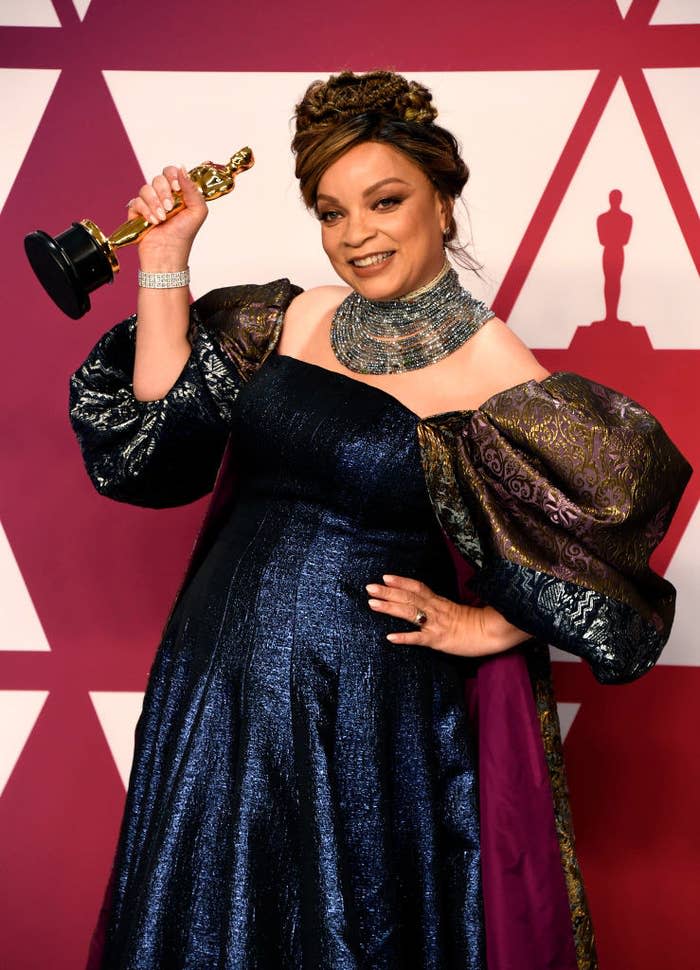
...And she's the first Black costume designer to receive a star on the Hollywood Walk of Fame.
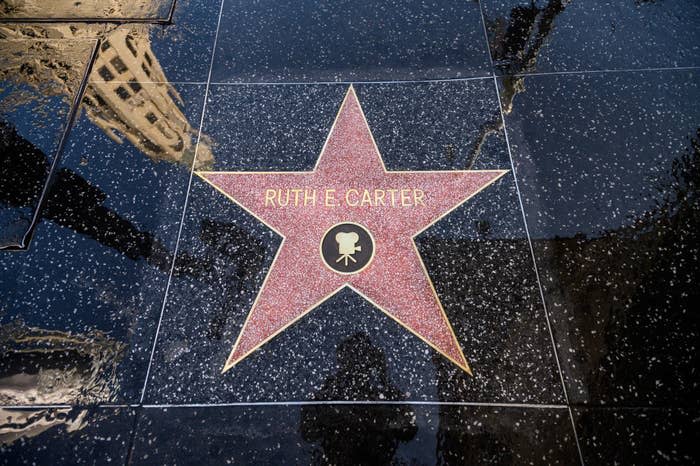
Carter told BuzzFeed, "We are a force in the industry and we deserve the same recognition and the same accolades. As generations progress, there's a desire to include all voices. There is a blend because I think social media has made things available to people that they had no idea existed. So, things like stars on the Hollywood Walk of Fame, it's part and parcel to how we are changing and how we are moving forward. No more only focusing on one thing. Time's up! Now, here comes Ruth Carter's star."
From superheroes like Black Panther to historical icons like Dr. Martin Luther King Jr. to the many, many characters she's costumed over the course of her long-lasting collaboration with director Spike Lee, Carter has shaped the way you watch movies, whether you know it or not. In honor of her work, here are 20 behind-the-scenes facts and details about her costumes that she's shared over the course of her career.
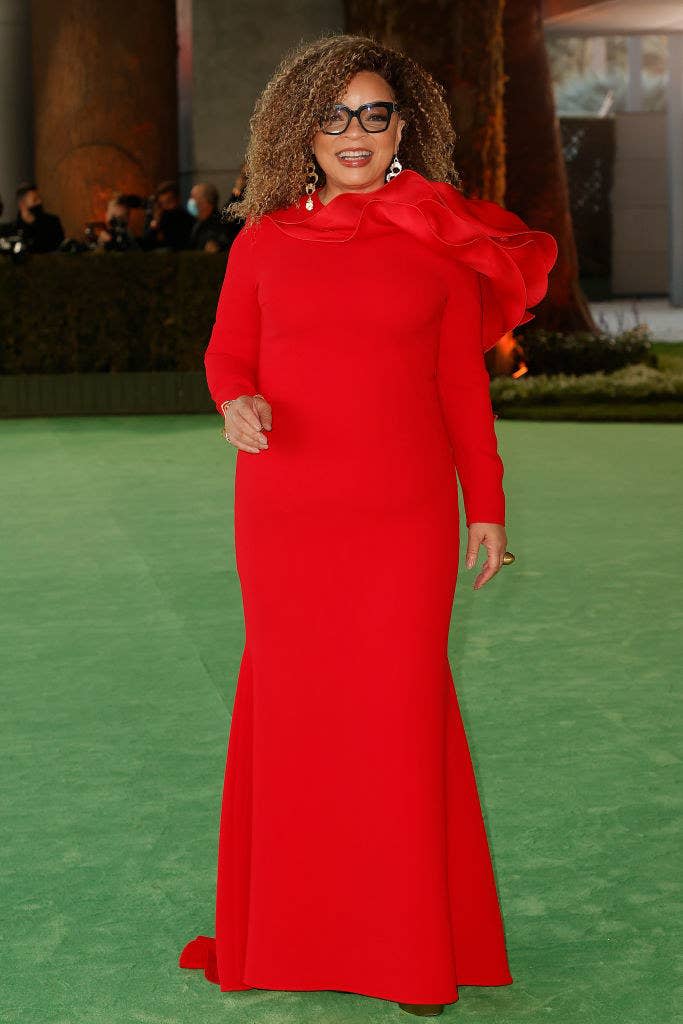
1.The costumes of Black Panther were heavily influenced by many different African cultures, as well as the aesthetics of Afrofuturism. According to the New York Times, before the film began shooting, Carter's team spent six months traveling to find African textiles and accessories from which to draw inspiration for the diverse fashion of Wakanda.
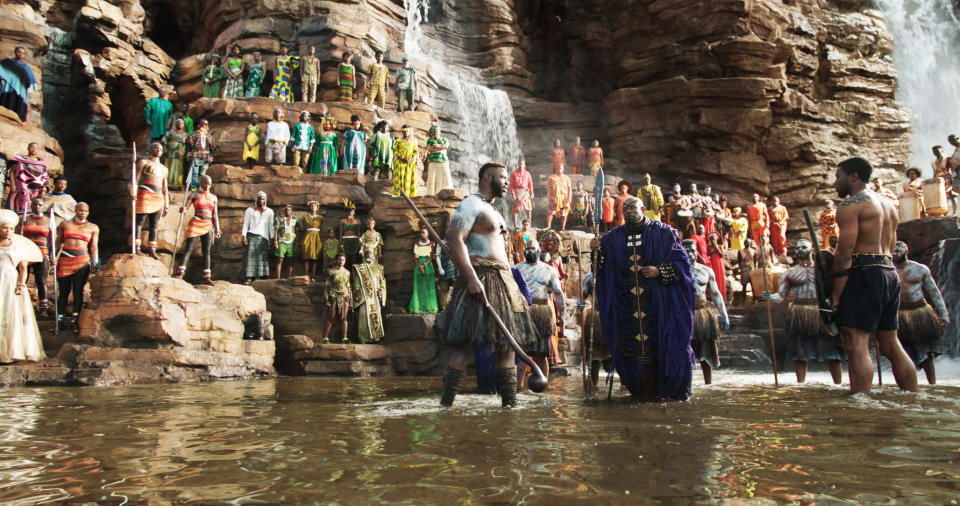
2.Speaking of Afrofuturism, from Dec. 2020 until Sept. 2021, a retrospective of Carter's work was shown at the SCAD FASH Museum of Fashion + Film. It was entitled "'Ruth E. Carter: Afrofuturism In Costume Design." Carter told the Guardian, "I define Afrofuturism in a very humanistic way. How are we able to use technology so we can be a part of what shapes tomorrow? When you can sit for your own purpose, you’re crafting your tomorrow."
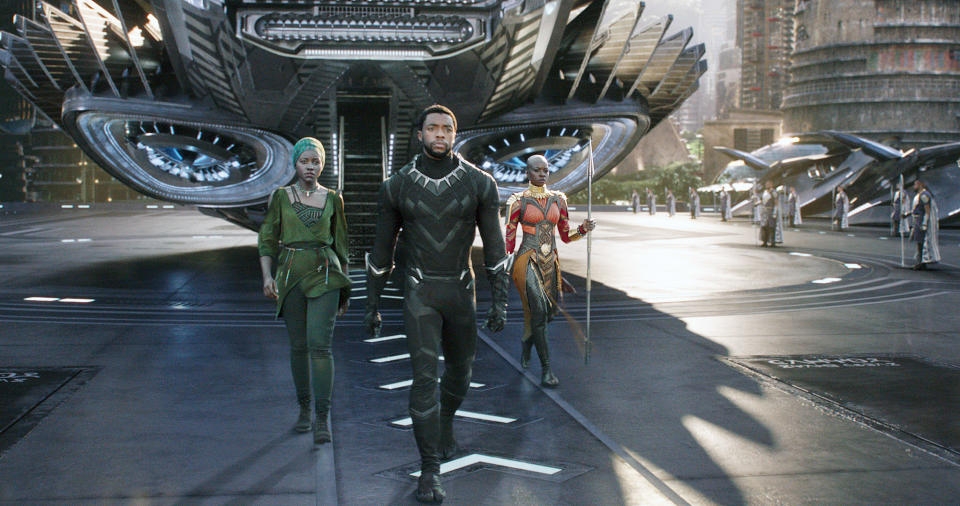
She went on, "When you see a protest march like Black Lives Matter, it’s people being empowered to change their future. It ties into systemic racism and abolishes that mindset. Afrofuturism is about trying to make a difference for tomorrow, trying to make a change."
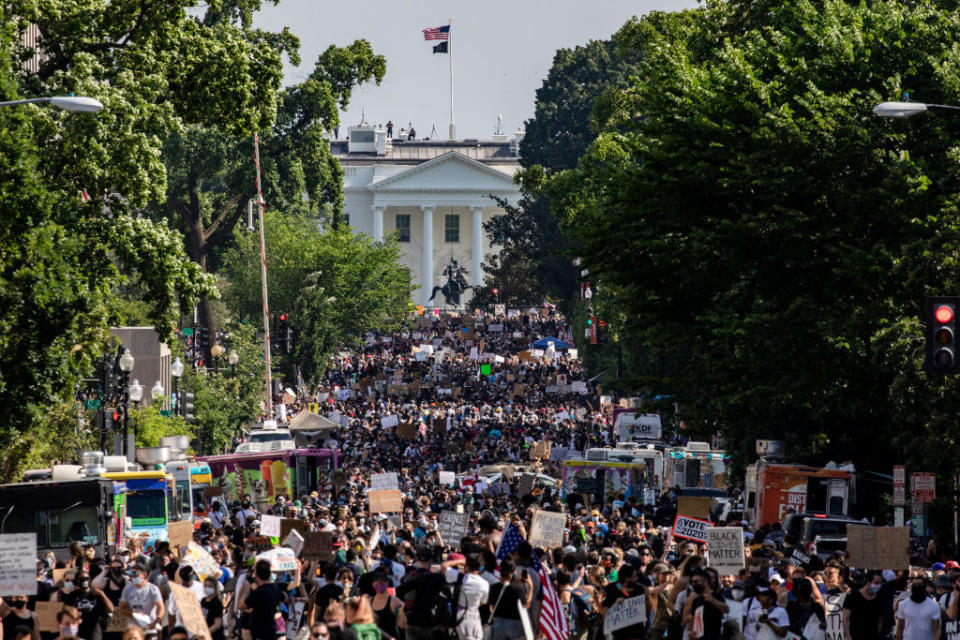
3.While Carter did not design the Black Panther suit, she added her own distinctive touch: A pattern of raised triangles. In an interview with the New York Times, Carter described the triangle as the "the sacred geometry of Africa," and noted that its inclusion on King T'Challa's costume "makes him not only a superhero, but a king, an African king." Carter told Vanity Fair that the triangle represents "the father, the mother, and the child."
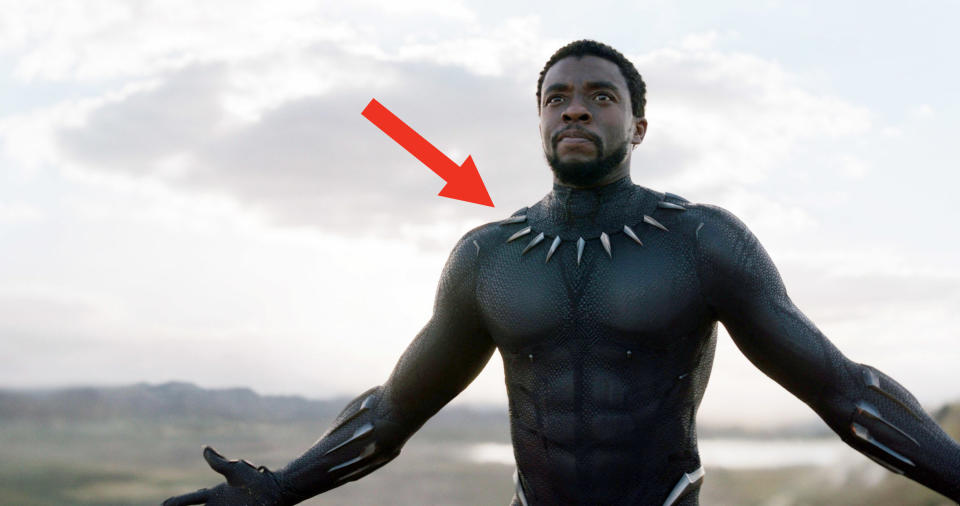
4.Carter told Vanity Fair that the stitching on the uniform of the Dora Milaje, the elite warrior class who are charged with protecting Wakanda's king, is representative of scarification.

Said Carter, "Different tribal customs use scarification as identifying their origins. Sometimes the scars are on the face, sometimes the scars are on the body, and you'll see that represented in many areas and many aspects of different tribal customs. So this Dora Milaje costume would not be complete without some representation of that tradition."

5.Speaking of the Dora Milaje, Carter told the New York Times that the beading of the front of their costumes evokes "the same tradition that you see throughout Africa — the Turkana, the Maasai." The leather harnesses they wear on the top half of their bodies were made in South Africa.

Additionally, Okoye wears a gold neckpiece and jewelry, rather than silver, to indicate that she is the leader of the group.
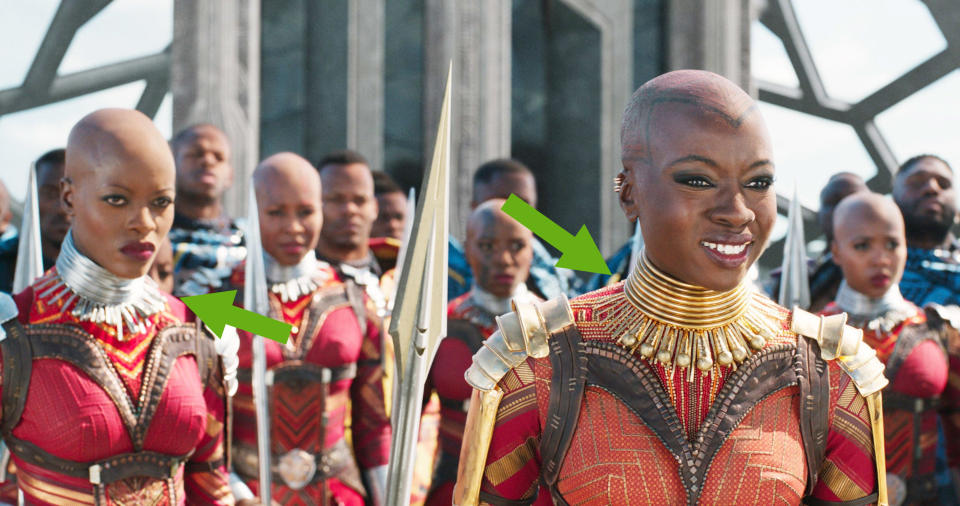
6.The blanket shields worn by W'Kabi (Daniel Kaluuya) and other members of Wakanda's border tribe were purchased for the film from the Basotho people in the southern African nation of Lesotho.
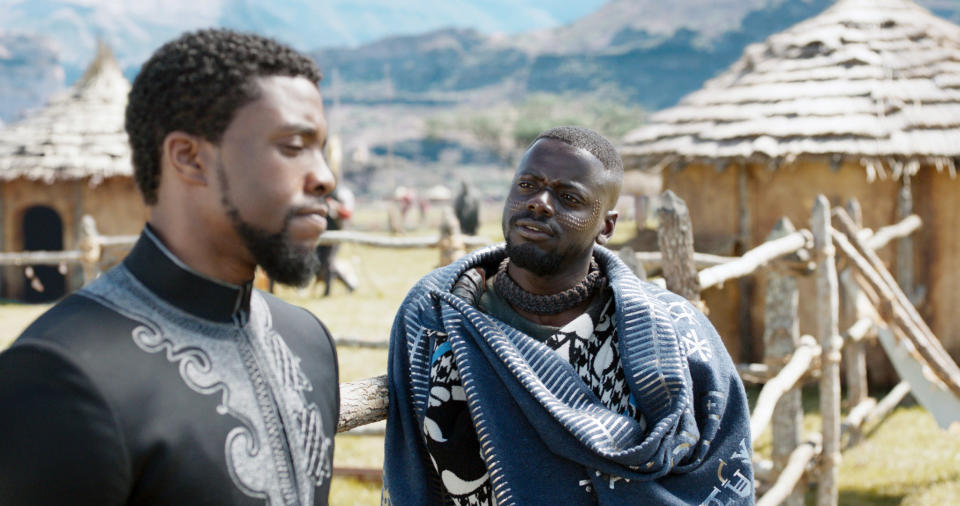
Carter told the Hollywood Reporter that Marvel thought that the blankets were too cumbersome as-is, so Carter had an assistant shave all 150 of them down.
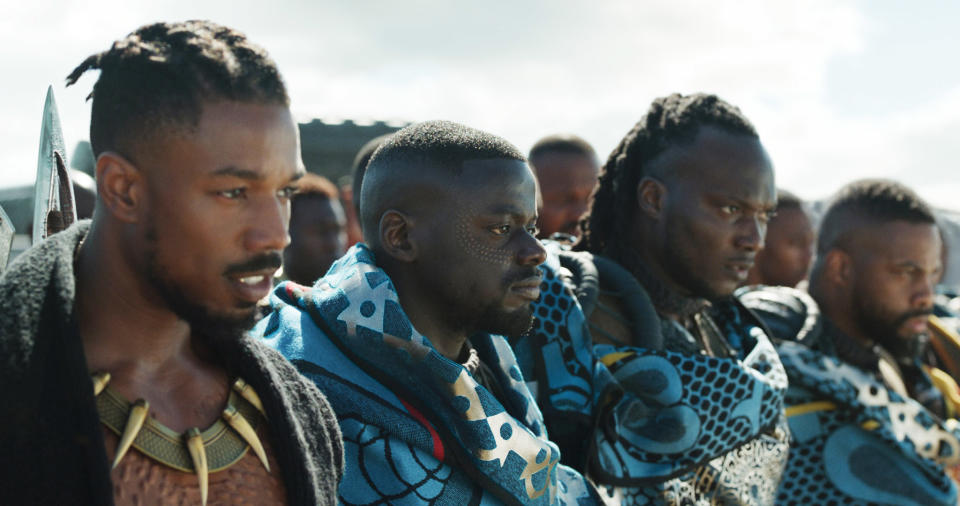
7.The onscreen fashion of Queen Ramonda (Angela Bassett) was significantly altered from the way the character dresses in the original comics. Carter told Vanity Fair, "The design for Queen Ramonda was very stressful for me at first, because in the comics, Queen Ramonda is walking around in yoga pants and barefoot, and she has her white beautiful dreadlocks. And, you know, she's very easy-going, and because we're making a movie, and I really wanted you to recognize her as the Queen at first glance, when we see her there on the landing pad when T'Challa returns to Wakanda with Nakia, we know right away that that's the Queen. And I think it's identifiable in her costume."

She continued, "She has her shoulder mantle, which is 3D printed. She has her isicholo, which is the married woman's hat from south Africa. And one of the main reasons why it was important to 3D print that piece was I needed it to be perfect. If Wakanda is this forward-thinking place that's leading in technology, the Queen would definitely have pieces that represented tradition, but also represented new innovations."
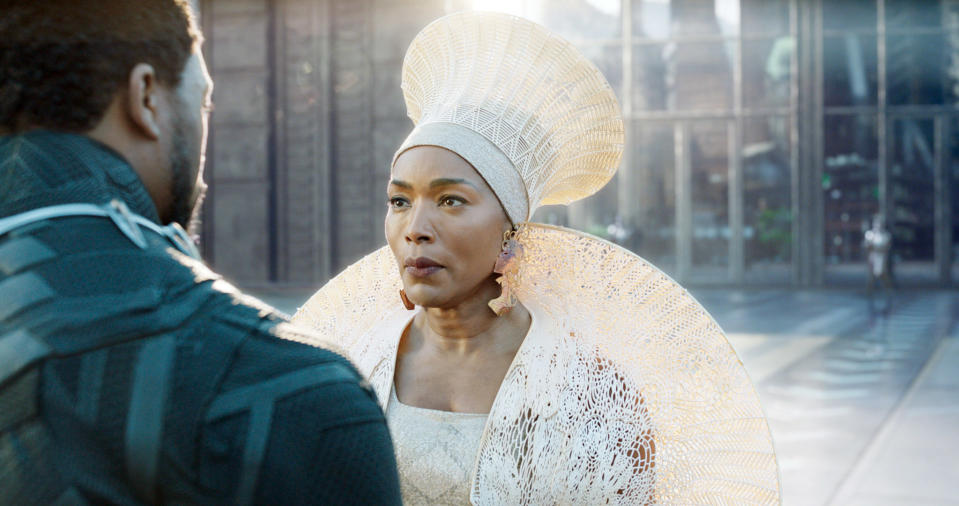
8.Carter told the New York Times that she and her team spent 6 months perfecting Queen Ramonda's headpiece. Said Carter, "We found a traditional Zulu married woman’s hat, complete with the ocher that makes it red, and like a hairy, furry, texture on it. ... I didn’t believe that the origins of its shape were real until I saw a real one."
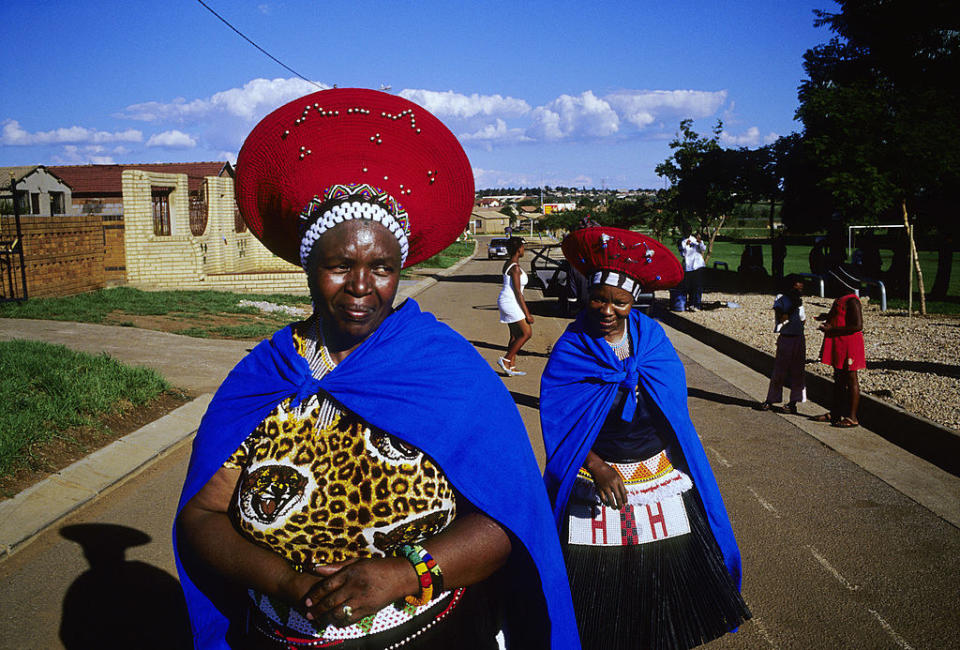
9.Carter told BuzzFeed that when she was designing costumes for Coming 2 America, she aimed to "take Zamunda into contemporary ideas and contemporary Africa" and to make the film "a little bit more world-inclusive." (Zamunda is the fictional African nation where the films are partially set.)
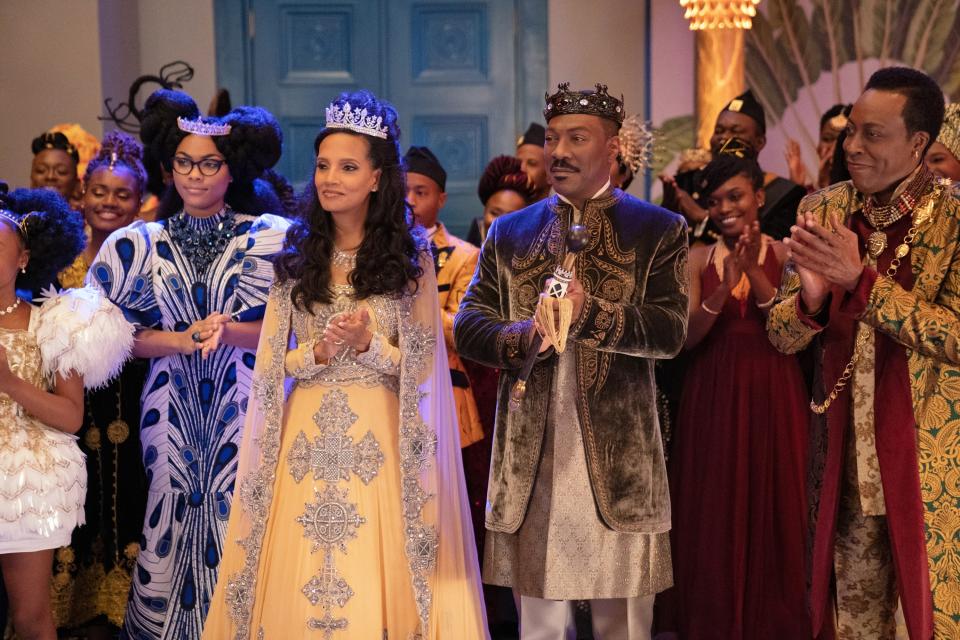
Carter went on, "Because we're talking about world inclusion, I incorporated a lot of African designers who work with small companies that would never get this kind of exposure in general." In an interview with the Hollywood Reporter, Carter said, "We had beautiful things made all over the world. I worked with about three dozen African designers, some of my favorites, and wrote to India and had stuff made."

10.Coming 2 America was a cruelty-free production, in contrast to its predecessor, which was released in 1988. Carter told Vanity Fair, "If you remember, the King wears a lion on his shoulder when he comes to America. And Prince Akeem, he also wears like an ocelot over his shoulder. And in the new Coming to America, we decided that we would 3D print the lion on the shoulder."
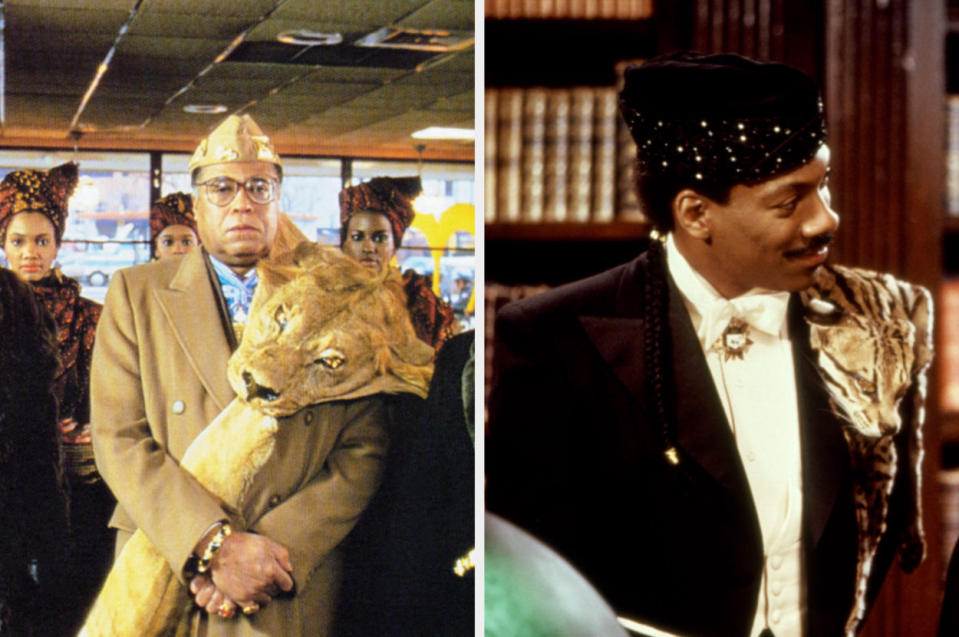
Carter said, "And I like the idea of it being a piece of jewelry as well. So we printed it in gold, and we gemmed the eyes and the nose. And as you might know, even the Maasai tribe in Africa, traditionally, they killed a lot of lions, but now they have technology that helps them chart where the lion herds are so that they won't follow their herd of cattle and they can steer away from them. So that all connects to technology for me as well."
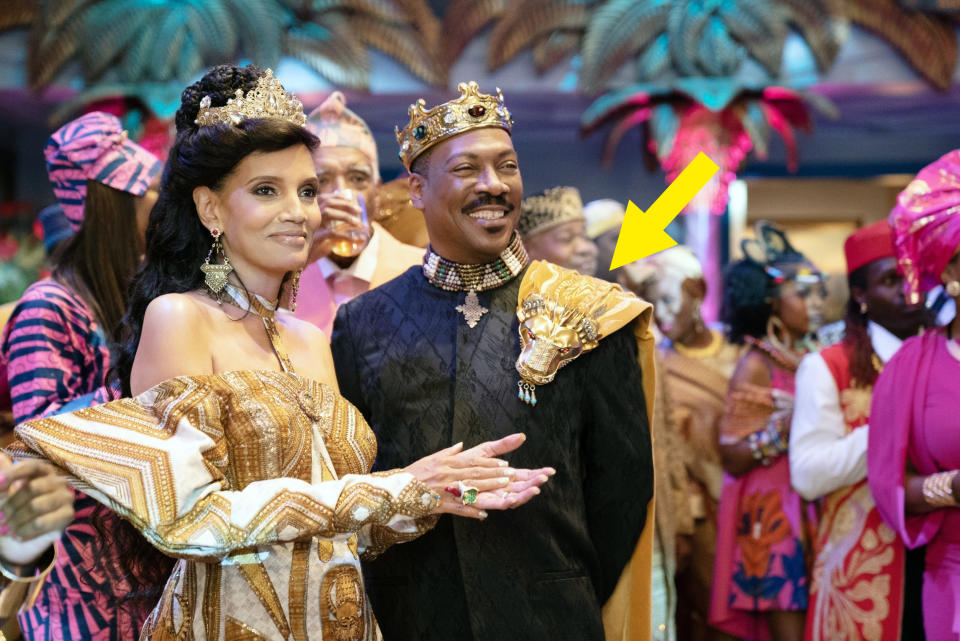
11.Carter told the Guardian that the jewels and crowns worn by the Zamunda royals were 3D printed, with a single exception.
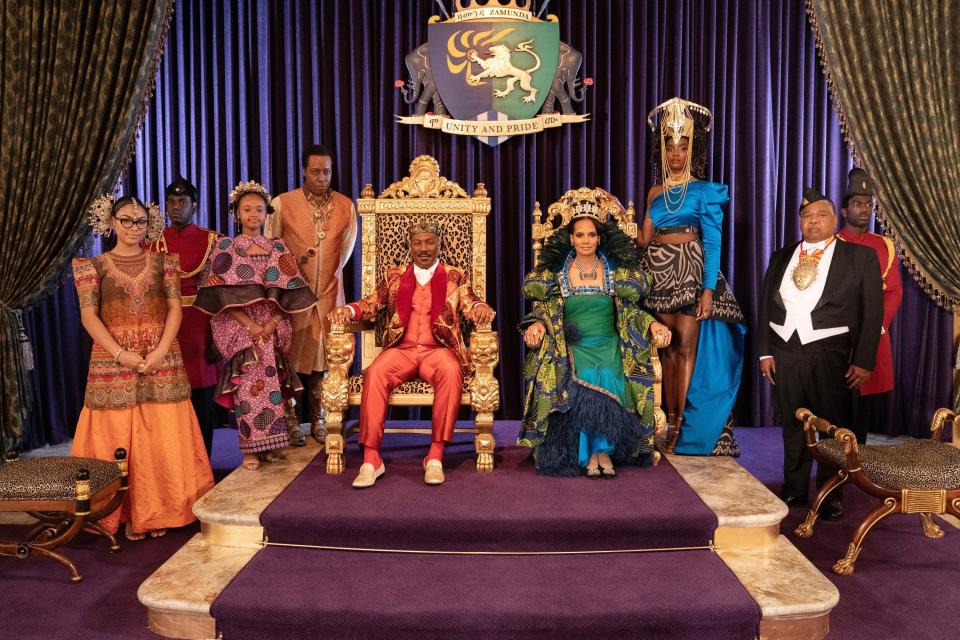
Carter said, "They were made on the computer, except one. One crown from the original movie shows up here, James Earl Jones wore his original crown. For this film, we were all about the opulence of royalty."
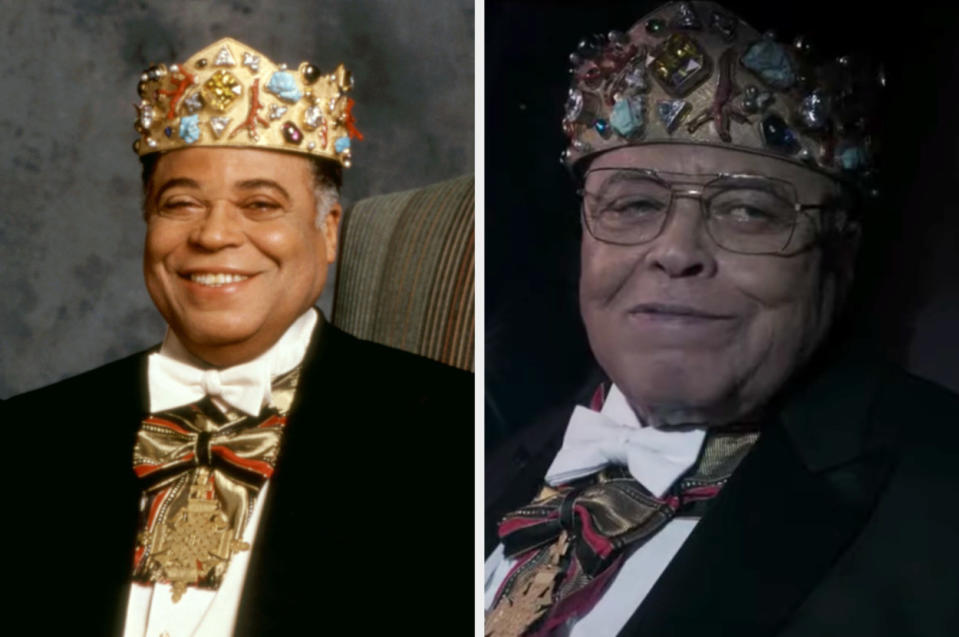
12.Carter told Vanity Fair that when she was working on Black Panther, she told her team, "Hey, this is not Coming to America." She explained, "Even though it was a great film, Wakanda really needed to have its own identity."
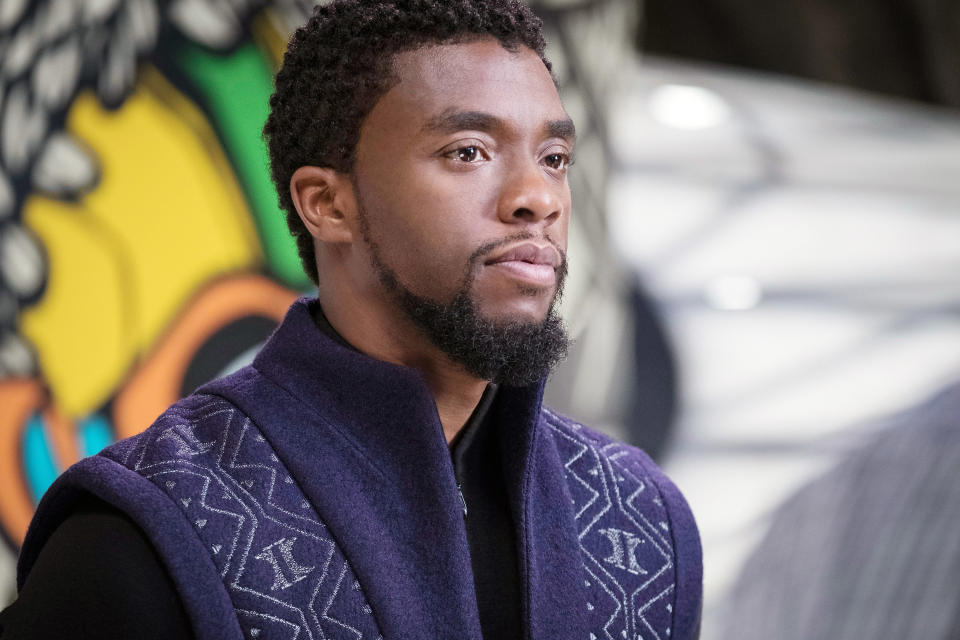
Then, when Carter started work on Coming 2 America, she told her team, "This is not Wakanda."
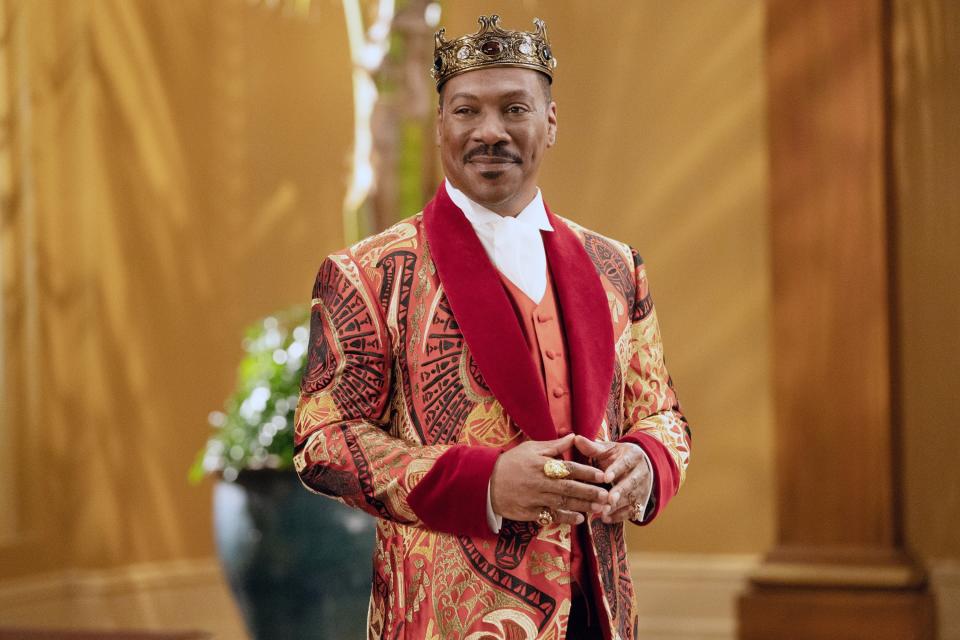
13.The iconic credits sequence of Do the Right Thing features Rosie Perez dancing to Public Enemy's song "Fight the Power." Carter told Complex that the song and the film's overall themes inspired her to dress Perez in "garments of protest."
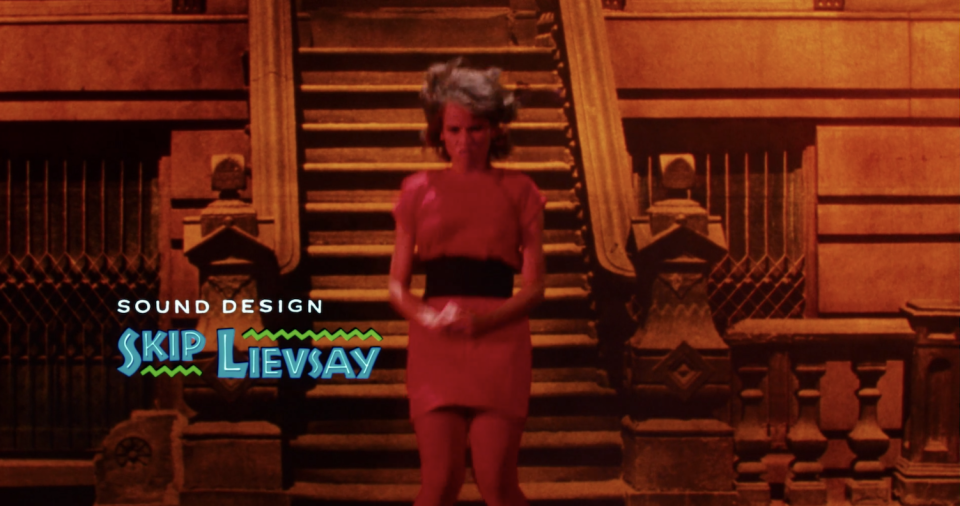
Carter said, "Boxing gloves and a red tight dress with a big elastic belt, and all of the moves of Rosie Perez. The intensity of the color and the hottest day of the year, it just made sense. Spike is so cerebral and very artistic, and he wants your ideas as well as his own. So his idea was to bring in the boxing gloves."
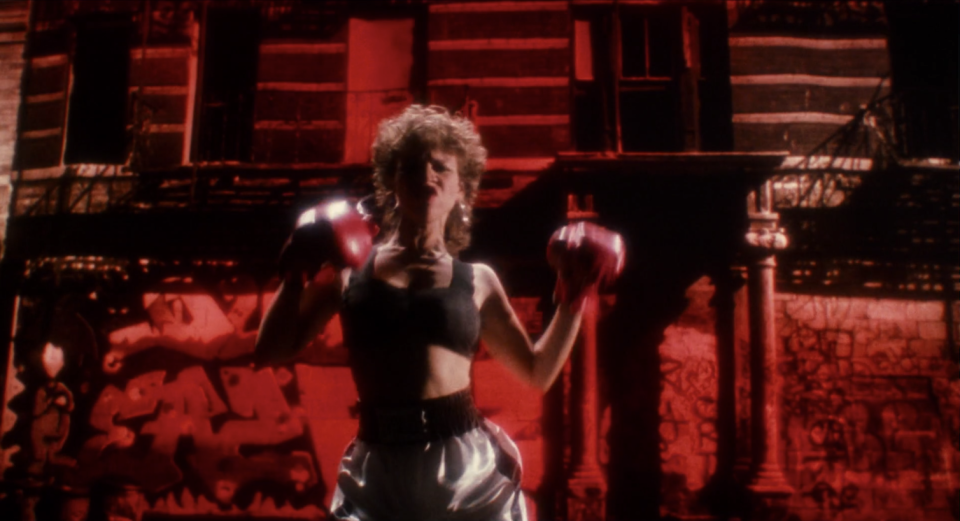
14.In an interview with the Hollywood Reporter, Carter recalled that the first "Bed-Stuy Do or Die" t-shirt worn by Radio Raheem (Bill Nunn) in Do the Right Thing misspelled the name of the Brooklyn neighborhood.
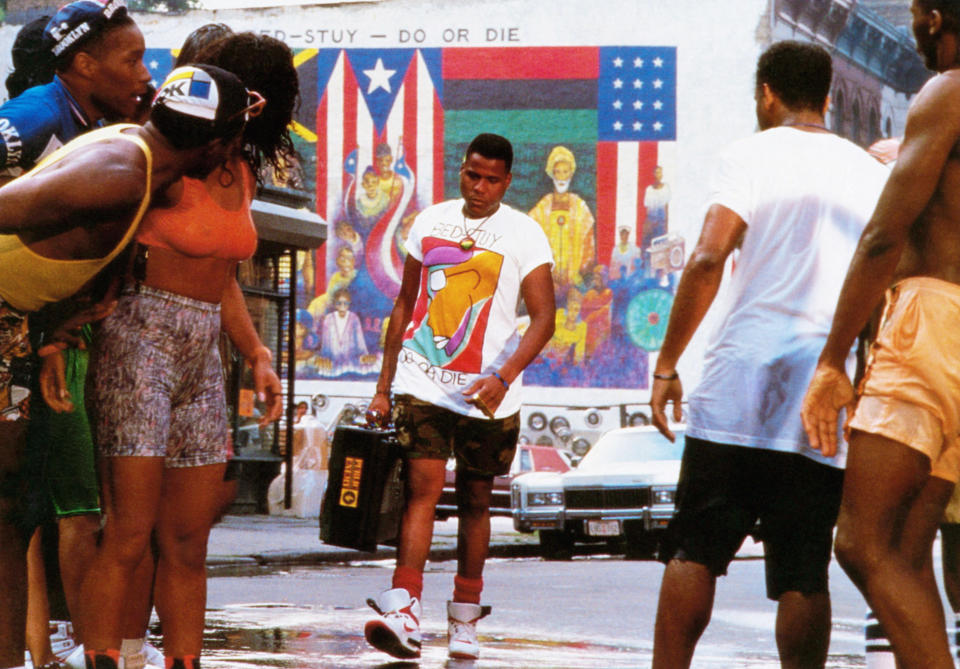
Carter said, "We wanted to show the sense of a neighborhood and pop culture and all the colors of Afrofuture culture within this African diaspora in Brooklyn. I imported a local artist, NaSha, to paint Radio Raheem’s ‘Bed Stuy Do or Die’ shirt. But when we painted it the first time, we spelled ‘Bed-Stuy’ wrong as ‘Bed-Sty' and they had already shot it, so we had to look at the footage and redo the T-shirt!"
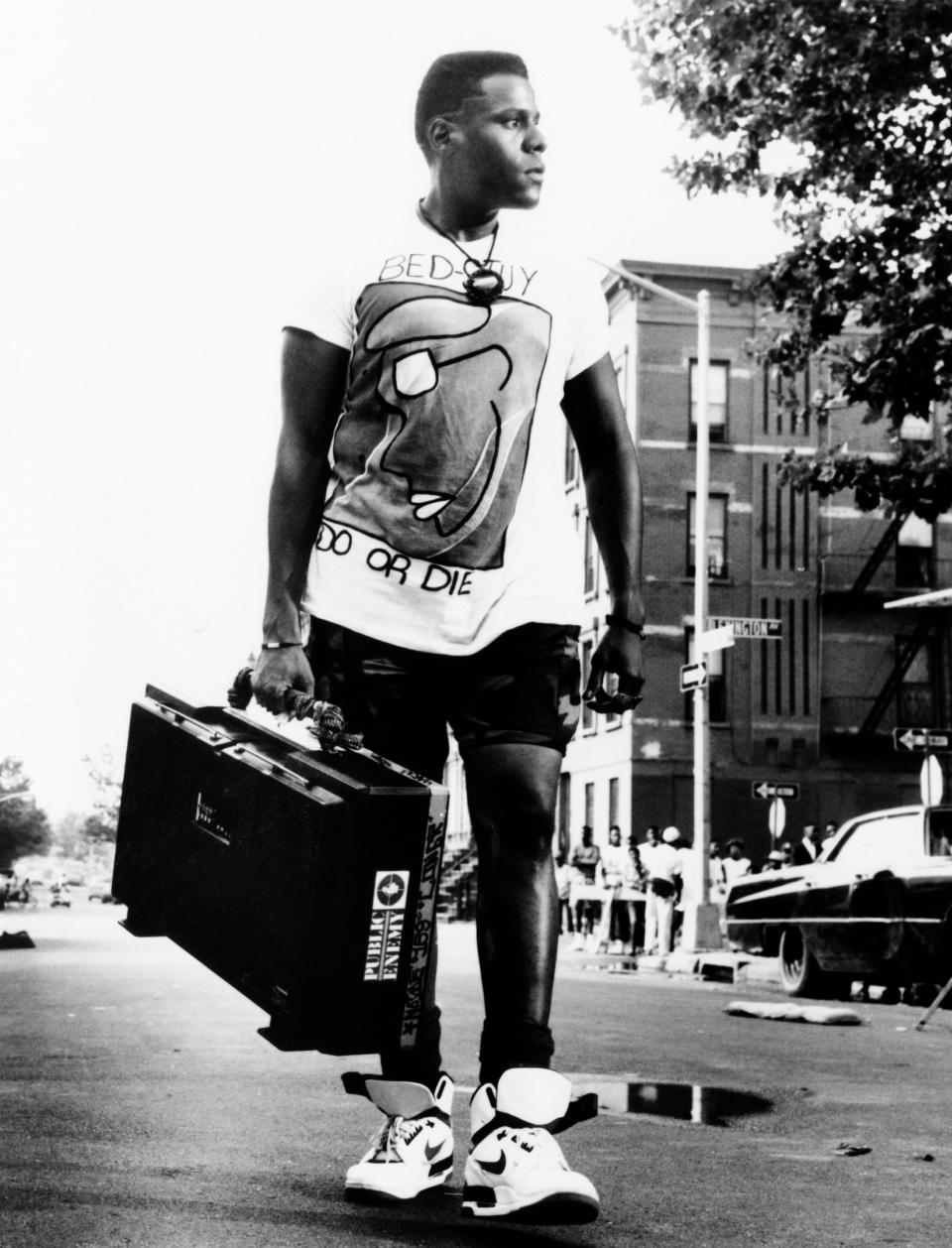
15.Carter told Complex that while she was researching the life of Malcolm X prior to costume designing Spike Lee's biopic, she was able to access his Department of Corrections file from when he was imprisoned in the 1940s and read the letters he wrote during that time period.

Said Carter, "And I was reading his original letters that he wrote while he was in prison to be transferred to another prison that had a bigger library. He was educating himself, and it really connected me to the man. Because I had to make decisions about him that weren't in pictures. What kind of pajamas that he wears to bed. So I really needed to get to know him."

16.Carter told Vanity Fair that the "powder blue zoot suit" that Malcolm wears in the film is described in The Autobiography of Malcolm X, and it was one of several costumes from the original book that Carter "really felt that I wanted to make sure we did."

17.Carter told the Root that "95 percent" of the costumes for Coretta Scott King (Carmen Ejogo) in Selma were "tailored from scratch."
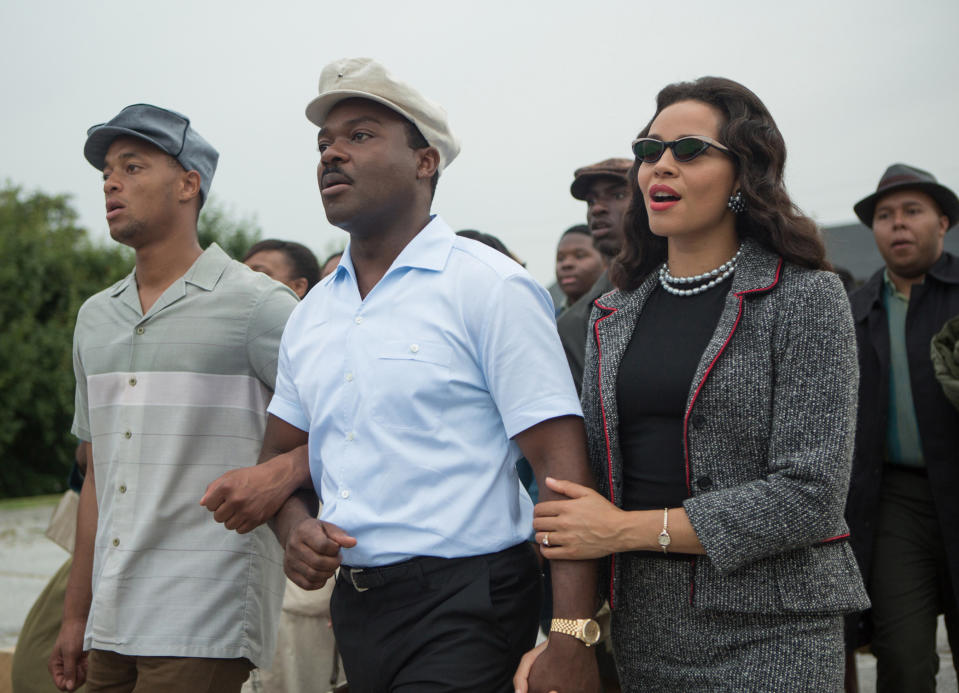
18.In Selma, members of the Student Nonviolent Coordinating Committee (SNCC) are dressed in casual clothing, in contrast to the formal suits of Dr. Martin Luther King Jr. and his fellow ministers. Carter told the Root, "[James] Forman was always in overalls, a white shirt and black tie, and a denim jacket. This was the dress of the younger organizers in solidarity to the Southern farmer, and it was widespread."
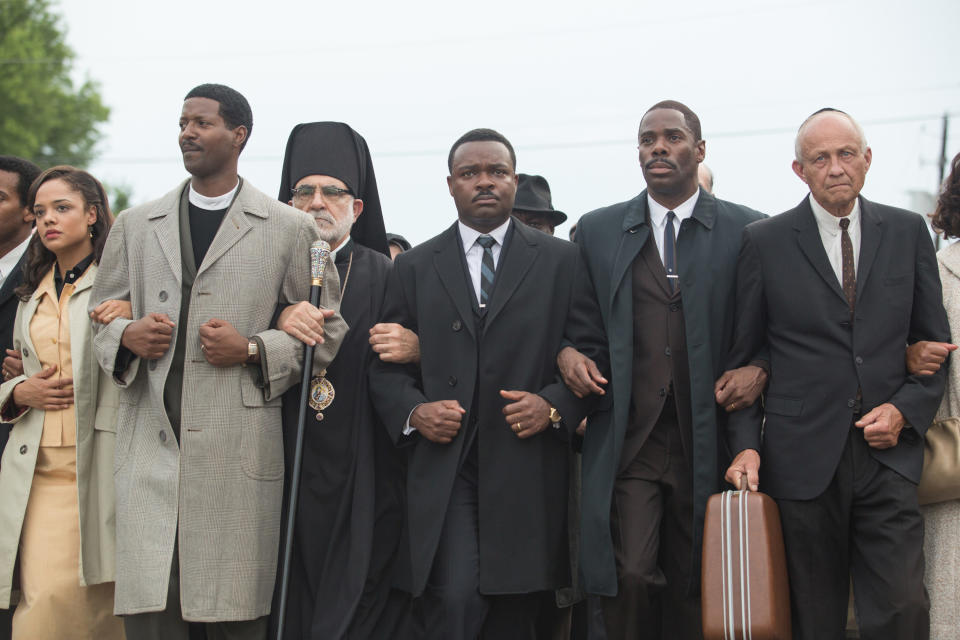
Director Ava DuVernay requested that out of the named characters, only James Bevel (Common) wear denim, for the sake of more straightforward storytelling and world-building. So Carter dressed Bevel in denim, and did the same for extras who were on the younger side. Said Carter, "I redressed dozens, hoping that they would eventually make it to camera in some unified way."

19.Carter told Entertainment Weekly that when designing the courtroom costumes worn in Amistad, she chose between "the route of rags and bare-chested, or the road of dignified and royal." Said Carter, "I decided to make them more human and more honored, as opposed to what people might think of captives from Africa."
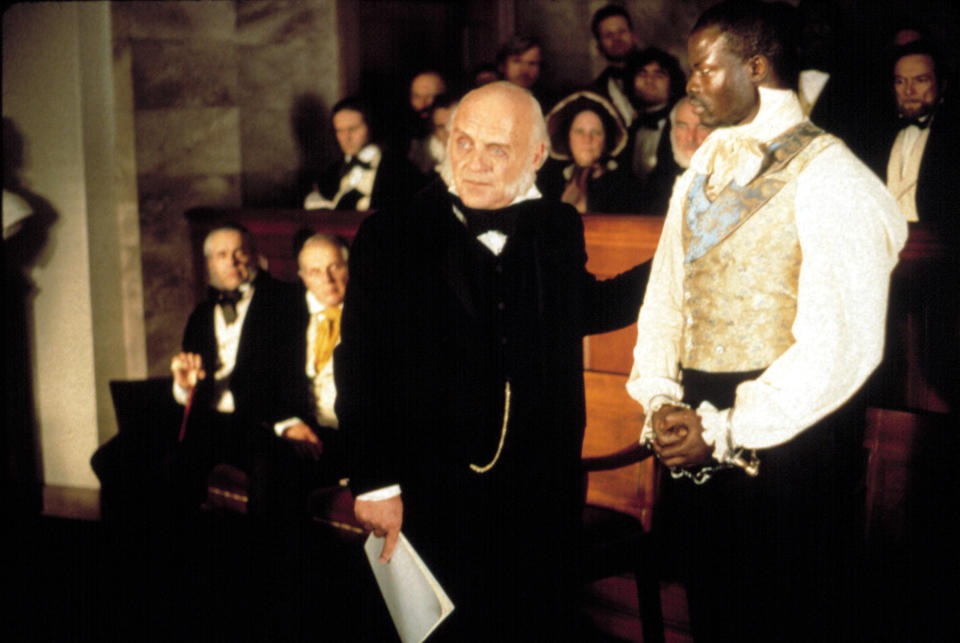
20.And finally, a glimpse towards the future: Carter told BuzzFeed that one of her personal costuming dreams is to work on a big film about the Harlem Renaissance.
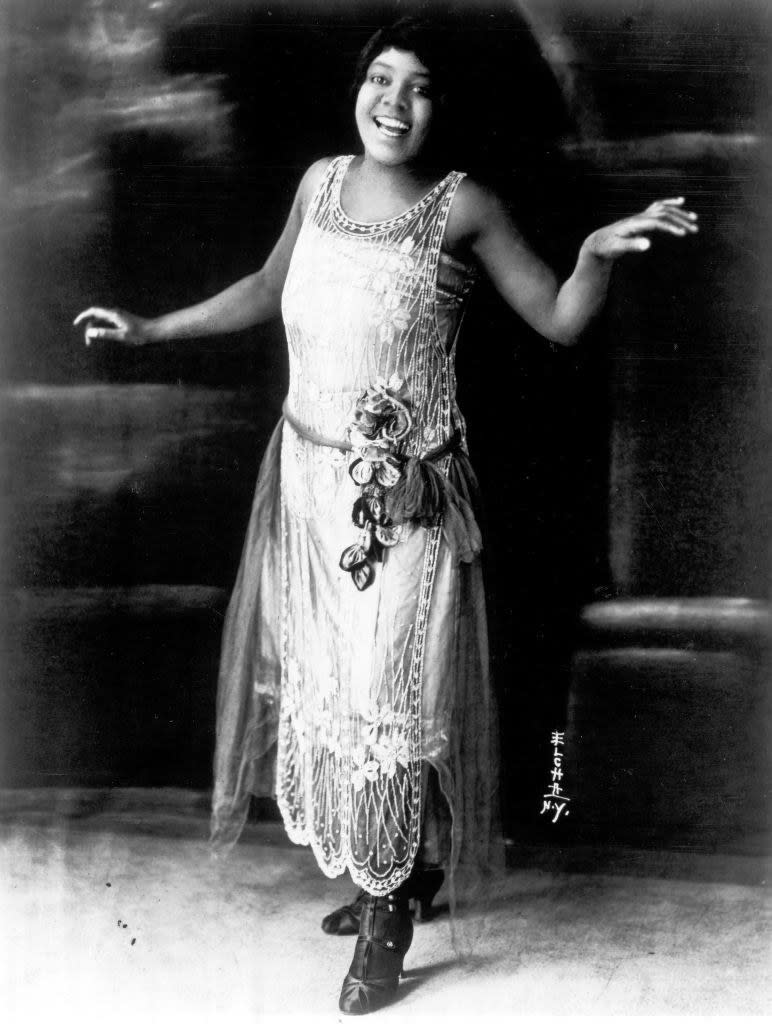
Pictured is singer Bessie Smith, aka the Empress of Blues.
Said Carter, "I would love to do the Harlem Renaissance. I know they did it a little bit with Ma Rainey's Black Bottom, but I want to do a big Harlem Renaissance film. I want to really get into the poets and the creative artists who were around during that time."
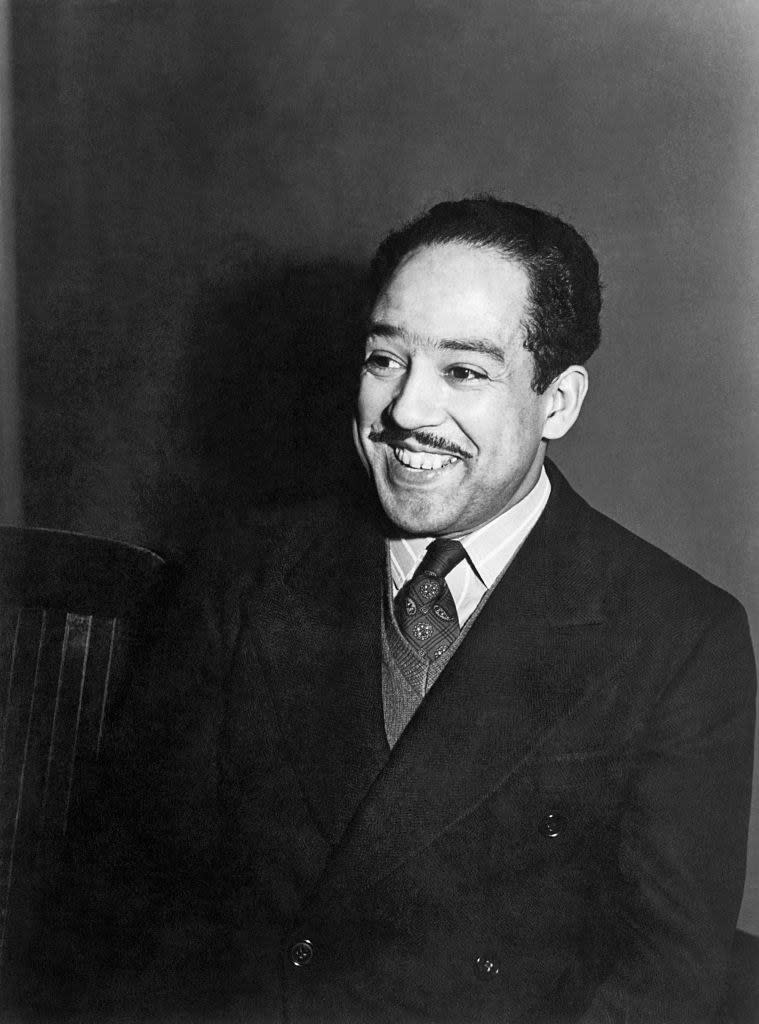
Pictured is Langston Hughes, a writer and icon of the Harlem Renaissance.
Make sure you head here for more of our Black History Month coverage!


